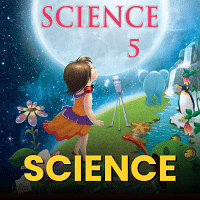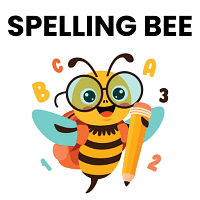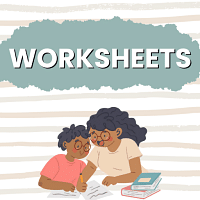Class 5 Exam > Class 5 Questions > Matter is made up tiny particles calleda)Atom...
Start Learning for Free
Matter is made up tiny particles called
- a)Atoms.
- b)Molecules.
- c)Cells.
- d)Ions.
Correct answer is option 'A'. Can you explain this answer?
| FREE This question is part of | Download PDF Attempt this Test |
Verified Answer
Matter is made up tiny particles calleda)Atoms. b)Molecules.c)Cells. d...
Matter is made up of tiny particles called atoms.
Most Upvoted Answer
Matter is made up tiny particles calleda)Atoms. b)Molecules.c)Cells. d...
MATTER IS MADE UP OF TINY PARTICLES CALLED ATOMS BECAUSE MATTER IS MADE UP OF MOLUCLES AND MOLUCLES ARE MADE UP OF ATOMS
Free Test
FREE
| Start Free Test |
Community Answer
Matter is made up tiny particles calleda)Atoms. b)Molecules.c)Cells. d...
Atoms are the correct answer to the question. Let's understand why atoms are the tiny particles that make up matter.
Atoms and their structure:
- Atoms are the basic building blocks of matter. They are incredibly small particles that cannot be seen with the naked eye.
- Atoms are made up of even smaller particles called protons, neutrons, and electrons.
- Protons have a positive charge, neutrons have no charge, and electrons have a negative charge.
- Protons and neutrons are located in the center of the atom, called the nucleus, while electrons orbit around the nucleus in specific energy levels.
Properties of atoms:
- Atoms are very tiny, with a typical size of about one ten-billionth of a meter.
- Each element in the periodic table is made up of a unique type of atom.
- Atoms of different elements have different numbers of protons, neutrons, and electrons.
- The number of protons in an atom determines its atomic number and defines the element.
- Atoms are neutral overall because the number of protons equals the number of electrons.
Formation of matter:
- Matter is anything that has mass and occupies space.
- Matter can exist in different forms such as solid, liquid, or gas.
- Matter is made up of atoms that combine to form molecules or ions.
- Molecules are formed when two or more atoms bond together. For example, water (H2O) is a molecule made up of two hydrogen atoms and one oxygen atom.
- Ions are formed when atoms gain or lose electrons and become charged particles. For example, sodium (Na) loses an electron to become a positively charged ion (Na+).
Conclusion:
Atoms are the tiny particles that make up matter. They are made up of protons, neutrons, and electrons and form the basis of all elements in the periodic table. Atoms combine to form molecules or ions, which then make up different forms of matter. Understanding the structure and properties of atoms is crucial in understanding the nature of matter.
Atoms and their structure:
- Atoms are the basic building blocks of matter. They are incredibly small particles that cannot be seen with the naked eye.
- Atoms are made up of even smaller particles called protons, neutrons, and electrons.
- Protons have a positive charge, neutrons have no charge, and electrons have a negative charge.
- Protons and neutrons are located in the center of the atom, called the nucleus, while electrons orbit around the nucleus in specific energy levels.
Properties of atoms:
- Atoms are very tiny, with a typical size of about one ten-billionth of a meter.
- Each element in the periodic table is made up of a unique type of atom.
- Atoms of different elements have different numbers of protons, neutrons, and electrons.
- The number of protons in an atom determines its atomic number and defines the element.
- Atoms are neutral overall because the number of protons equals the number of electrons.
Formation of matter:
- Matter is anything that has mass and occupies space.
- Matter can exist in different forms such as solid, liquid, or gas.
- Matter is made up of atoms that combine to form molecules or ions.
- Molecules are formed when two or more atoms bond together. For example, water (H2O) is a molecule made up of two hydrogen atoms and one oxygen atom.
- Ions are formed when atoms gain or lose electrons and become charged particles. For example, sodium (Na) loses an electron to become a positively charged ion (Na+).
Conclusion:
Atoms are the tiny particles that make up matter. They are made up of protons, neutrons, and electrons and form the basis of all elements in the periodic table. Atoms combine to form molecules or ions, which then make up different forms of matter. Understanding the structure and properties of atoms is crucial in understanding the nature of matter.
Attention Class 5 Students!
To make sure you are not studying endlessly, EduRev has designed Class 5 study material, with Structured Courses, Videos, & Test Series. Plus get personalized analysis, doubt solving and improvement plans to achieve a great score in Class 5.

|
Explore Courses for Class 5 exam
|

|
Matter is made up tiny particles calleda)Atoms. b)Molecules.c)Cells. d)Ions.Correct answer is option 'A'. Can you explain this answer?
Question Description
Matter is made up tiny particles calleda)Atoms. b)Molecules.c)Cells. d)Ions.Correct answer is option 'A'. Can you explain this answer? for Class 5 2024 is part of Class 5 preparation. The Question and answers have been prepared according to the Class 5 exam syllabus. Information about Matter is made up tiny particles calleda)Atoms. b)Molecules.c)Cells. d)Ions.Correct answer is option 'A'. Can you explain this answer? covers all topics & solutions for Class 5 2024 Exam. Find important definitions, questions, meanings, examples, exercises and tests below for Matter is made up tiny particles calleda)Atoms. b)Molecules.c)Cells. d)Ions.Correct answer is option 'A'. Can you explain this answer?.
Matter is made up tiny particles calleda)Atoms. b)Molecules.c)Cells. d)Ions.Correct answer is option 'A'. Can you explain this answer? for Class 5 2024 is part of Class 5 preparation. The Question and answers have been prepared according to the Class 5 exam syllabus. Information about Matter is made up tiny particles calleda)Atoms. b)Molecules.c)Cells. d)Ions.Correct answer is option 'A'. Can you explain this answer? covers all topics & solutions for Class 5 2024 Exam. Find important definitions, questions, meanings, examples, exercises and tests below for Matter is made up tiny particles calleda)Atoms. b)Molecules.c)Cells. d)Ions.Correct answer is option 'A'. Can you explain this answer?.
Solutions for Matter is made up tiny particles calleda)Atoms. b)Molecules.c)Cells. d)Ions.Correct answer is option 'A'. Can you explain this answer? in English & in Hindi are available as part of our courses for Class 5.
Download more important topics, notes, lectures and mock test series for Class 5 Exam by signing up for free.
Here you can find the meaning of Matter is made up tiny particles calleda)Atoms. b)Molecules.c)Cells. d)Ions.Correct answer is option 'A'. Can you explain this answer? defined & explained in the simplest way possible. Besides giving the explanation of
Matter is made up tiny particles calleda)Atoms. b)Molecules.c)Cells. d)Ions.Correct answer is option 'A'. Can you explain this answer?, a detailed solution for Matter is made up tiny particles calleda)Atoms. b)Molecules.c)Cells. d)Ions.Correct answer is option 'A'. Can you explain this answer? has been provided alongside types of Matter is made up tiny particles calleda)Atoms. b)Molecules.c)Cells. d)Ions.Correct answer is option 'A'. Can you explain this answer? theory, EduRev gives you an
ample number of questions to practice Matter is made up tiny particles calleda)Atoms. b)Molecules.c)Cells. d)Ions.Correct answer is option 'A'. Can you explain this answer? tests, examples and also practice Class 5 tests.

|
Explore Courses for Class 5 exam
|

|
Signup for Free!
Signup to see your scores go up within 7 days! Learn & Practice with 1000+ FREE Notes, Videos & Tests.
























